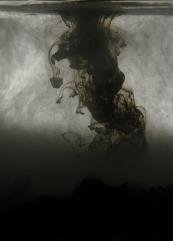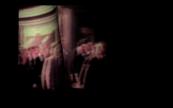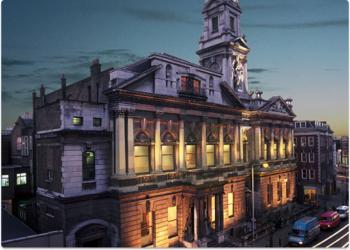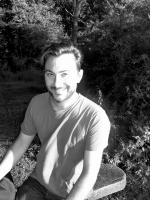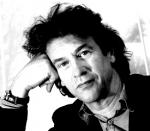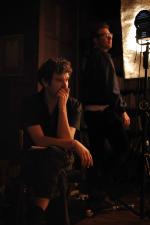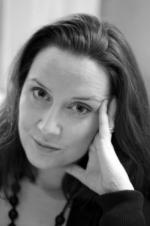2010
2010 Shortlisted Artists
Alexander Bates
Simmer, 2009
“I applied for the Open Prize as the concept of the "Video Painting" is of particular interest and relevance to my recent moving-image work. In these non-narrative pieces, isolated objects are documented in a single take, as they experience a state of change over time. While these works do have art historical references and influences such as tableaux vivants and formalist filmmaking, they are primarily inspired by autobiographical and everyday experiences and observations that are then later recreated in a controlled environment.”
Alexander Bates graduated with an MA in Fine Art Media from the Slade School of Fine Art in 2008 and previously received a BA Hons in Drawing and Painting from the Edinburgh College of Art in 2005.
Alexandra Hughes

The End of August, 2009
“I work through a layered investigation of the reality of the subtle, the silent, the momentary, the ungraspable and the poetic. It is an attempt to elevate the overlooked quotidian moments that punctuate our existence. It is an immersion in physical phenomena of the ephemeral kind and engenders a state of mind that is acutely aware of the silent and ever-changing flux which underlies all existence. It is an awareness that even the most permanent is only seemingly so.
My interest in Video Painting comes from an exploration in the relationship between stillness and movement. I harness the power of light to illuminate these fleeting contrasts and draws a focus on the mechanisms of ‘recording’ and ‘replay’ that allow for the reflection on a moment.”
Alexandra Hughes graduated with an MA in Fine Art Media from the Slade in 2008 and previously a BA Hons Photography from University College Falmouth in 2004.
Crucifiction. 2009
Born in Warsaw, Poland 1982. She completed MA at the Academy of Fine Arts in Poznan, Poland in 2006 and in 2009, completed a Postgraduate Diploma at the Byam Shaw School of Art at Central Saint Martins. She is co- founder of ‘8784 h project’ and XR Gallery in Luboo, Poland.
In her works a constant starting point is a belief that reality relies on an idea which claims that the world owns an objective fundament and you just need to remove the illusion to reach it. Being culturally, mentally and literally suspended between several geographic locations it is hard to point out a single path to follow. Driven from a constant search for ‘the’ image, my recent works are settled somewhere within painting and video, between the mountains of Sinai and an old factory in Poland.
Metwaly’s work has been exhibited international at venues including Townhouse Gallery, Cairo, Egypt (2010); Maktab, Cairo (2010); BWA Wrocław, the 9th Geppert Contest for Polish young painters, Wrocław (2009); Islington Arts Factory, London (2009); Lauderdale House, London (2009); and X-Ray Gallery, Lubon, Poland (2008).
Karolina Raczynska

Anatomies Sequence II, 2009
“My work explores both the mental and physical body, its presences together with its transitional qualities. These transitions are the moments of transformations from one state of being to another. They are often responses by the body to the world that it cannot control. Within the work, I want to unfold physical gestures, outcomes of emotions that may otherwise remain hidden. My work also explores the nature and environment surrounding the body. The work presents the body and nature as it is, rather as one would like it to be.
I use Video Painting to articulate both my investigations and my feelings related to the bodies and the surrounding nature. Although I carefully set the conditions for the creation of the work piece, I do not want to reinterpret, or represent the images. I am less interested in presenting staged acts or imaginary narratives but more intrigued by the direct presentation of the authentic situation together with its mood.
I am very interested in the physical dialogue between the spectator and my work. Through exhibition I hope to create one space that reduces the distance between the two. I wish for the work to be felt rather than watched.”
Karolina Raczynska graduated with an MA in Fine Art Photography from the Royal College of Art in 2009.
Marc Atkinson

Revealing, 2009
“Over the last year of my studies I have developed my moving image practice in a photographic and documentary way using long takes, minimal editing and no camera movement. Through the documentation of unique spaces my work attempts to capture and evoke areas that are layered with past and present use. I feel my work also reflects on marginal spaces where man-made constructions and natural forces co-exist through the play of light, movement of wind and flow of water. The reduction and themes present in my work is indicative of Video Painting and reflects a modern desire to evoke real and natural spaces often with the ideal of preserving an experience or environment. Video Painting creates a possible replication of past experiences to share and exhibit as a reminder of the need for naturalness and stillness in everyday life.
Marc Atkinson graduated with an MA in Communications, Art and Design from the Royal College of Art in 2009.
Michael Lightbourne
Elevator, 2009
“My artistic practice centres around the pursuit of the video work as a nexus between the moving image, the photograph, and the performance and experience of video as event. It has incorporated lo-fi DV portraits of wind turbines and Alpine landscapes, abstract processed lightshows, and the live remixing of self-shot and appropriated content.
I’m interested in the way that time itself becomes part of the formal fabric of the cinematic artwork, and how the related forms of VJing and video art allow this facet of the film aesthetic to be drawn out and tapped for a range of expression and exploration not possible in any other form. The static long take cuts out a chunk of space-time, frames and mounts it, and presents it to the viewer. Time infects style, but it is also theme and content - what we see is the way that a world, or indeed a little, tiny piece of a world, exists in time.”
Michael Lightborne was born and raised in Ireland before moving to the UK to study film at the University of Warwick.
Olwen Coughlan
Acedia, 2009
Acedia is an ancient Greek word describing a state of listlessness or torpor, of not caring or not being concerned with one's position or condition in the world. It can lead to a state of being unable to perform one's duties in life. Its spiritual overtones make it related to but distinct from depression. Acedia was originally noted as a problem among monks and other ascetics who maintained a solitary life.
“You should realize that as soon as you intend to live in peace, at once evil comes and weighs down your soul through acedia, faint-heartedness, and evil thoughts. It also attacks your body through sickness, debility, weakening of the knees, and all the members. It dissipates the strength of soul and body. ... But if we are vigilant, all the temptations fall away.” Amma Theodora
“My work is an exploration into apathetic thought and the occasions I have succumbed entirely to it and have allowed myself to fall prey to Acedia. I have decided I must protect myself from it. I must stand sentry and remain vigilant. I must fight with all I have to stave off the Demon Acedia. My only way of combating Acedia lies in my work and the repetitious nature of visuals I make. Through constant repetition and production I disallow myself to fall siege to Acedia. At night one must be extra vigilant for it is easy to find empathy for the apathetic.
My work draws heavily on the writings of JD Salinger and visual inspiration for the work came from Chapter 2 of After Dark by Haruki Murakami.”
Olwen Coughlan graduated with a BA in Visual Arts Practice from IADT, Dublin in 2009.
Rita Ribas

Gathering, 2009
“I'm interested in exploring the strange stillness and meditative qualities of moving image, so Video Painting is the perfect medium. My work involves experimenting with the boundaries of the documentary format and exploring the fine line between fact and fiction. I particularly delight in observing people within their environment and much of my work grapples with the subjects of personal relationships, memory, death and atmosphere.
I want to use Video Painting to capture the feel of a place and to immerse the viewer in the act of observation. I am also interested in further exploring the language of documentary and the haunting stillness of video.”
Rita Ribas graduated with a BA Hons in Fine Art from Wimbledon College of Art in 2007.
Robert Dixon

Untitled, 2009
“Whilst researching aspects of the role of computers in experimental video, I came across Brian Eno's video paintings made in the 80s from the rooftops of Manhattan, which intrigued me and gave me a new outlook on video art. I loved the simplicity and calming nature to this series of videos and its stripped down uncomplicated visual. Since then I have produced films with as little post production as possible and began creating video paintings. To produce a video painting is a great test of ones ability to capture something truly real without the need to create narrative and enhancement.”
Robert Dixon graduated with a BA Hons in Illustration with Animation from Manchester Metropolitan University in 2009.
Valentina Ferrandes
Council Estate, 2009
“My video practice is currently based on the investigation of geographical sites and how they relate to people living there. I use Video Painting as a tool for stretching time within my works, as a way to re-assess our perception of the environment, and push it towards a more contemplative direction.”
Valentina Ferrandes has studied at Chelsea College of Art for the past three years and in 2008 was selected by China Academy of Art to take part in their exchange program.
2010 Jury:




Ben Lewis Hilary Lawson Marc Valli Ziba Ardalan de Weck






